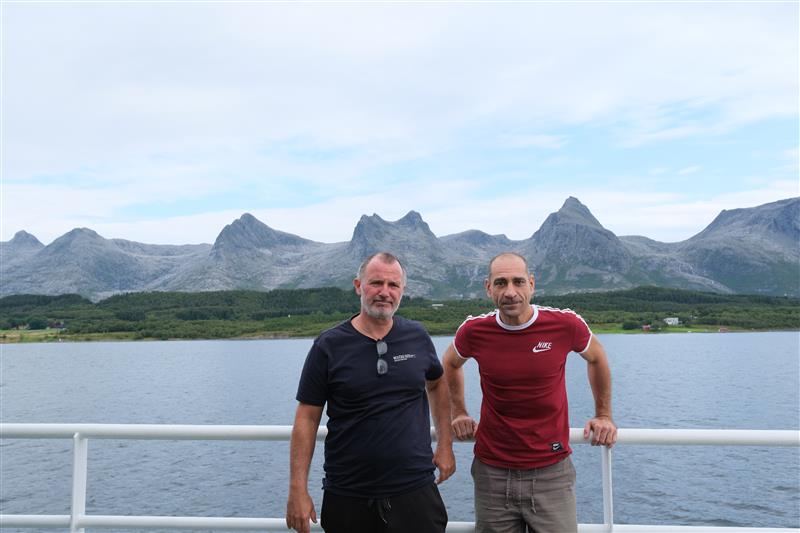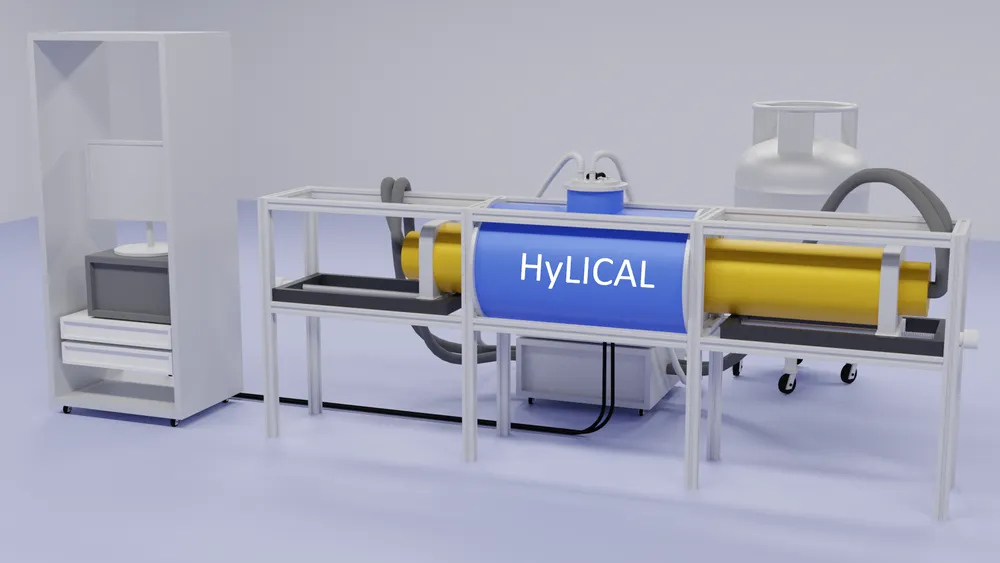The idea of using hydrogen and fuel cells in the maritime sector goes back many years, but the interest has increased greatly in recent years. IFE established a new strategic initiative in 2014 to look into the possibilities for using hydrogen and fuel cells in fast-moving passenger boats and offshore supply vessels. The maritime industry itself has been a driving force, and hydrogen is now entering the shipping industry. The Norwegian Public Roads Administration’s (Statens Vegvesen) allocation of the contract to Norled in November 2018 on hydrogen ferries in the county of Rogaland is a good example of what is happening. A number of other initiatives are underway, and several municipalities have established projects to develop emission-free ferries.
Norway has a comprehensive maritime industry cluster with research institutions, shipyards, equipment suppliers and suppliers of maritime services. Public authorities have followed up with initiatives, and the Government is working on a new hydrogen strategy. Norway is on the way of taking the position as the leader in green shipping.
The climate issue is the driving force
International shipping traffic accounts for a large part of the world’s emissions of greenhouse gases. The IMO (International Maritime Organization) has ambitious climate goals, and it is expected that strict emission requirements will apply inclusw to the shipping industry. Ships have a long lifespan, so the shipping companies must already, from 2030, prepare a large-scale restructuring, for environmental and climate-friendly low and zero-emission solutions. In Norway, coastal shipping accounts for almost 10% of our CO2 emissions, so a transition to hydrogen will be an important contribution in the country`s climate commitments.
Hydrogen and batteries create new challenges for the maritime sector
Since the use of hydrogen and batteries is new to the industry, there is a need to develop new knowledge, additionally to new regulations. The industry and society have more than100 years of experience dealing with fossil fuels, and most of the existing systems and routines in the shipping industry are related to oil and diesel, LNG and LPG. IFE contributes with research to ensure that the maritime sector can handle the transition to a green and emission-free shipping in a safe and efficient manner. IFE works with, among other things, technological and safety-related challenges related to the design and operation of bunker systems for hydrogen and the use of fuel cells in ships. It is especially the upscaling and preparation for large-scale hydrogen that is demanding. IFE has more than 20 years of experience in the research and development of hydrogen systems, and is currently leading and participating in several major projects focusing on the use of hydrogen in the maritime sector.
The safety challenges related to using hydrogen are also very different from recently, and hydrogen requires, among other things, new ways to monitor and control the state of the hydrogen tanks and the fuel cells on board the boats. The research activities at IFE’s Digital Systems sector, which has more than 50 years of experience in developing advanced monitoring systems for the nuclear power industry, are of great benefit in this context.
Chilled hydrogen or compressed gas?
The energy density of hydrogen is limited compared to other types of fuel. If the ships are to go far, hydrogen is not currently applicable. However, hydrogen can be used advantageously for boats with a shorter range and which have a fixed base as a starting point. For Norway, hydrogen can prove particularly suitable as Norway has a number of ferries, supply boats for offshore installations and fish farming facilities that require boat transport.
A challenging question that IFE is trying to address is the question of using chilled (about -253 ° C) hydrogen or compressed gas (> 250 bar). Chilled hydrogen requires extensive hydrogen production facilities and is costly, while the use of pressurized gas is simpler since this requires less complicated hydrogen production facilities and the gas can be stored in standard pressure vessels. The two hydrogen alternatives have their advantages and disadvantages, and IFE has research activities on both.
Where does the hydrogen come from?
If Norway is to succeed with a transition to hydrogen in the maritime sector, more hydrogen must be produced. For the climate, it is best if hydrogen production is based on renewable energy. With ample supply of electric power, Norway has a good starting point for sustainable hydrogen production. It is also possible to produce hydrogen from natural gas, which is also an ample resource in Norway. Hydrogen production from natural gas, however, entails emissions of CO2, but different concepts for carbon capture are under development in Norway which will be able to provide sustainable hydrogen production from natural gas. There are challenges related to both costs and technology when scaling up hydrogen production. In Norway, the government is in the process of establishing a national hydrogen strategy, and IFE is helping to advise on which hydrogen solutions are appropriate for the various application areas.
Norway, a unique learning arena

“Hydrogen as an energy carrier is an important contribution to dealing with climate challenges, but we must be humble and not believe that hydrogen can be used in all forms of transport. In Norway, however, we have some special advantages that we should utilize. We have expertise throughout the value chain from production, to use of hydrogen. Our geography with the need for ferries in public sector, a knowledgeable and offensive maritime sector, and supportive public authorities gives us a unique learning arena to use hydrogen in the maritime sector. Additionally, the development of battery technology is currently also very important for the maritime sector. Therefore, we have every reason to look positively at the opportunity to get emission-free shipping traffic along the Norwegian coast, “says Øystein Ulleberg, research director IFE and head of FME MoZEES, a national research center for zero emissions in transport (MoZEES).
Examples of hydrogen projects in the maritime sector that IFE is now working on:
Title: “Hydrogen and Fuel Cells for Maritime Applications”
Project participants: Research partners: IFE, NTNU, USN
Users and industrial partners: Equinor, ABB Marine, Hayward Design & Solutions, Umoe Advanced Composites, Lloyds Register, Norwegian Maritime Directorate
Title: “Land-based Monitoring of Autonomous Ships”
Project participants: Kongsberg Maritime, IFE, NTNU
Title; MoZEEES RA3/RA4 sub-project that is aimed at developing a method for calculating the energy consumption on speedboat and ferry routes in Norway, in order to dimension battery and/or fuel cell / hydrogen systems, as well as costs for components on the ship and for hydrogen. In addition, it is aimed at developing a techno-economic model to evaluate energy systems for speed boats and ferries (from boat to shore) based on AIS and power system data, as well as performing life cycle analyzes (LCA).
2019-03-13 Viktor A. Wikstrøm jr.
Related news
-

29. January 2025
New Discovery in the Arctic Ocean: Borealis Mud Volcano
The Borealis Mud Volcano, a recently discovered underwater structure in the Barents Sea,…
-

15. February 2023
Game changer for zero emission transport – HyLICAL
The EU-project HyLICAL has been granted close to 5 M€ from the Clean Hydrogen…

